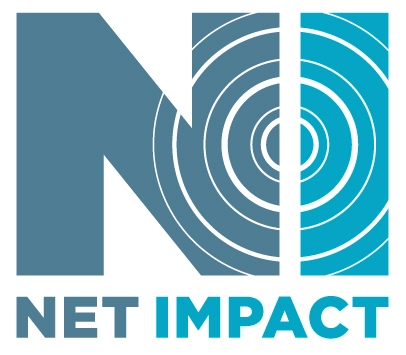The End of the Barking Dog
/Is it an example of the powerful partnership that can be created between business and nonprofits?
Or is it simply about writing a check – and checking a box?
I mentioned in an earlier post on The Changebase that I recently attended the 2009 Net Impact Conference at Cornell University, and one of the panels I attended tackled this question.
The panel was called “The Evolution of Corporate Philanthropy: Achieving Greater Impact through Strategic Giving” – and moderator Mark Kramer, managing director at FSG Social Impact Advisors, immediately set the record straight regarding the changing role of corporate philanthropy over time.
His hypothesis is that in the last twenty years, the purpose of corporate philanthropy has evolved from mere existence (he actually used the word "irrelevance") to creating shared value for a company, its nonprofit partners, and its community.
To prove this point, Mark enlisted the help of an impressive corporate philanthropy panel:
- Anne Bronson, director of US Corporate Citizenship at Accenture
- Jason McBriarty, senior manager of Worldwide Community Affairs at Levi Strauss (and a Boston University MBA!)
- Hasting Stewart, vice president at Shell Oil Company Foundation.
Here’s what I learned:
Question: Do you still run into the issue of people doubting whether philanthropy is an important part of business?
Jason from Levi’s started out by noting that his company is privately-owned with a history of philanthropic community support (a factor that I believe is crucially important when it comes to the successful adoption/implementation of sustainability and CSR programs). He noted that the company’s new CEO understands that even in bad times philanthropy is a core component of Levi Strauss’ business.
Anne from Accenture said that, in this tough economy, shareholders don’t always want to see large checks going out the door. To respond to this, she and her team have focused more on donations of employee time through skills-based volunteering – which, given the experience of the Accenture workforce – is certainly a valuable gift.
Question: How can philanthropy be used to drive business goals?
I thought this was an especially important question – as I learned this summer as a corporate philanthropy intern, “doing the right thing” will only get you so far.
In the end, it’s about proving that the corporate philanthropy program is aligned with the business objectives.
Hasting said that philanthropy often reinforces the work that his company does by enabling Shell to have a presence in local communities. For example, every city or town that hosts a Shell refinery also has a community advisory panel (managed by the Shell Foundation and made up of local leaders and city advocates) that meets quarterly to engage in dialogue and share feedback or concerns. Thus philanthropy serves as an entry point for Shell to connect with its local communities.
Jason acknowledged that Levi Strauss engages in philanthropy because it’s the right thing to do, but it also looks critically at how philanthropy can have an impact on the business. One area of focus for Levi’s is its network of over 600 suppliers. Through its Foundation, Levi Strauss is training suppliers and their employees on issues relating to human rights and labor conditions in factories. In this way, corporate philanthropy is another lever that Levi’s can pull to ensure that its business is successful and sustainable.
Question: What kinds of attitude changes have you seen taking place in regards to public/private partnerships?
Anne noted that in the past relationships between the for-profit and nonprofit sectors had been strained, and even antagonistic. But, she believed that partnerships among business , nonprofits and governments were growing in popularity – and that when you focus on opportunities to partner with, rather than fight against, other organizations you ultimately create even more value and impact.
, nonprofits and governments were growing in popularity – and that when you focus on opportunities to partner with, rather than fight against, other organizations you ultimately create even more value and impact.
Jason highlighted the recent launch of a new partnership with Goodwill as an example of the power that can come through partnerships.
After evaluating their supply chain, Levi’s found that the greatest use of energy in the lifecycle of their 501 jean is consumer washing of the product at home. This made the company realize that it needed to do a better job of educating its consumers regarding how to care for their jeans as well as what to do with them once they were no longer wanted. And thus the Goodwill partnership – and a new Levi’s care tag on the inside of all 501 jeans – was borne.
Question: Given our economy, how has your company’s outlook on philanthropy changed?
In general, all of the panelists agreed that they’ve seen cuts to their budgets and staff. But, they also all agreed that they’re not seeing an abandonment of philanthropy just because times are tough.
As one panelist put it, “philanthropy is about being in it for the long haul” – and companies can’t just leave their communities because the economy is struggling.
All panelists did agree that, beyond measurement, monetizing the impact of philanthropy is a huge challenge. Levi’s, for instance, looks at measuring impact through the “buzz” that their cause marketing campaigns create, while Accenture uses storytelling to demonstrate the impact of their community investments.
Perhaps the most powerful moment of the session came when one panelist asked why corporate philanthropy was being forced to prove financial returns to the business when other functions (like marketing) have always had dubious connections to ROI?
In the end, he said, we need to stop being “the barking dog” - that is, forcing a conversation about why philanthropy matters - and instead showcase the assets that philanthropy has to offer to the business.
I couldn’t agree more!









